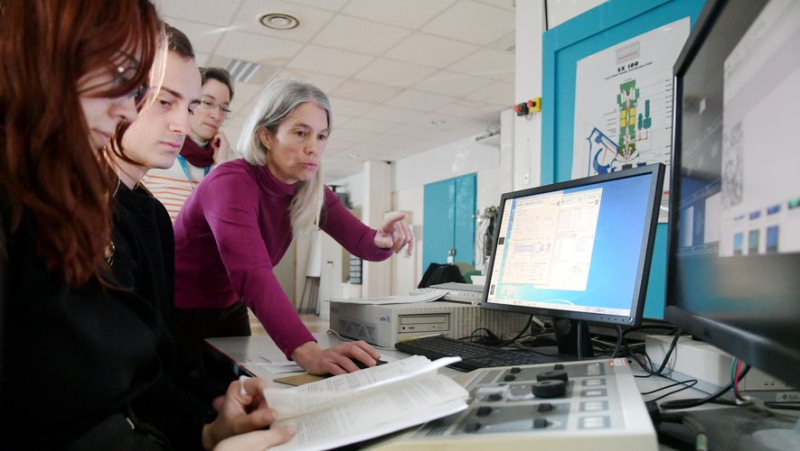FILE. In the old Cévennes mines, critical metals for the energy transition are hidden

Bénédicte Cenki works with her students at the University of Montpellier. With some, she carries out sampling on Cevennes mining sites. Midi Libre – MICHAEL ESDOURRUBAILH
Geologist Bénédicte Cenki, from Montpellier University, is interested in critical metals linked to lead and zinc, long exploited in the Cévennes and Lozère. Critical metals in which we were not interested twenty years ago.
That Thursday, in a technical hall of the science faculty of Montpellier University, there were Tess, Milena, Colin, Jérémy and Nolan, leaning towards the screen, detailing the data from the microprobe analysis of the rock sample that they carried out. A thin slice, barely 30 microns, crossed by an electrical beam. "It interacts with matter and gives a specific signal per chemical element, which we will be able to quantify, explains their teacher, Bénédicte Cenki. From a simple glance, we cannot tell whether a given sample contains a critical metal or not", the concentration can be only a few PPM, parts per million, on a microscopic scale, or in "nuggets", like in a cake.
This "pebble", the teacher-researcher of the geosciences laboratory collected it on Mount Lozère, in a disused mine gallery in the south of the Massif central conceals everything "a rosary". Lead and zinc mines, historically exploited, now abandoned, where people "were not looking, even twenty years ago", today precious metals, qualified as critical in Western Europe, in view of fragile sources of supply.

Analysis of samples by microprobe makes it possible to isolate the possible presence of metals. Midi Libre – MICHAEL ESDOURRUBAILH
Collection on sites
Or, "the chemical elements are put together by affinities, slips Bénédicte. We will not find nickel in old zinc or lead mines", but we can come across "l&rsquo ;indium, germanium and gallium". The first is widely used in digitalization, "for touch screens", gallium in the manufacture of photovoltaic panels and germanium for catalysts , optical fibers, for example.
These metals are at the center of the digital and energy transitions. And the network of old zinc and lead deposits, from Lozère to Ardèche, via Malines, to Saint-Laurent-le-Minier, or La Croix-de-Pallières to Anduze, in the Gard, is interesting to search. First of all, underlines Bénédicte Cenki, "because these are areas already worked by man" and not virgin territory. Then, because mining waste, these residues from the initial extraction of lead or zinc, are counted in millions of tons, slag heaps, " entire valleys, in Saint- Laurent", to be valorized, rehabilitated before perhaps digging the ground further.
The research work of the Montpellier scientist has found its place in the PEPR Common Base, for which she will go up to Haute-Loire. The idea is, with a postdoctoral fellow and his 3rd degree students, to "take an interest in the primary formation mode of these critical metals"and draw up a map of the possible presence of gallium, germanium, indium, by collecting samples from mining sites and studying them.
A map of the presence of gallium, germanium, indium
But the geologist has at the same time convinced the ANR, the National Research Agency, to grant her funding for a related project called Critical metals in orogens. This time, she will focus on the "secondary processes, i.e. modifications subsequent to the primary formation of critical metals", whose formation she believes "differs from base metals".
This "innovative approach, which could change the methodology of exploration and exploitation" of critical minerals, has enabled Bénédicte Cenki to obtain ’euro750,000 of the ANR.
The project began in March.
I subscribe to read the rest




